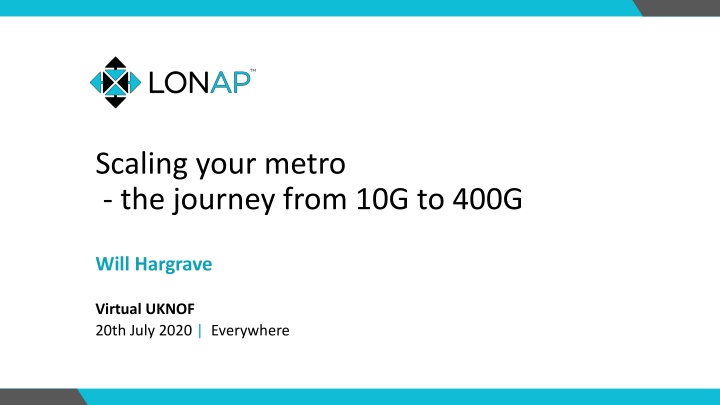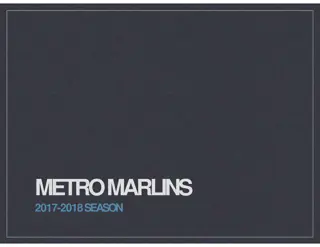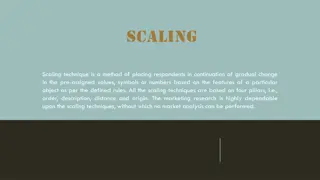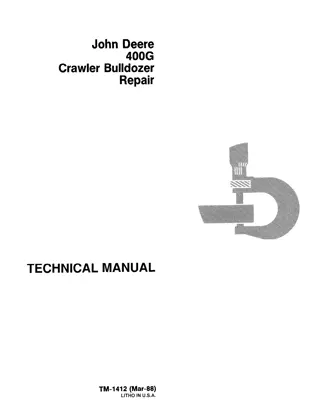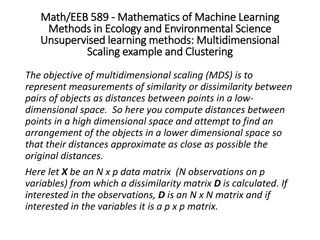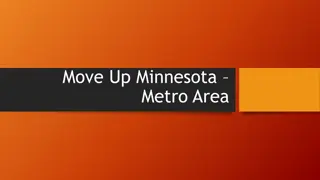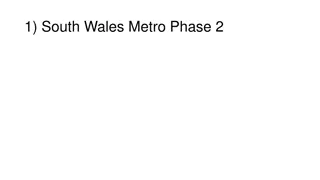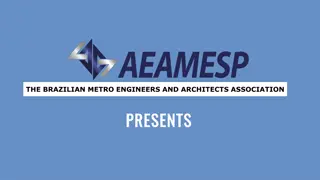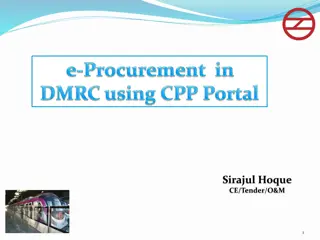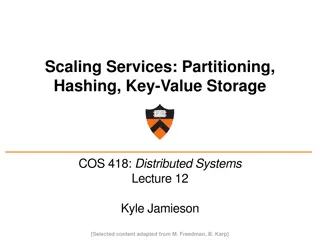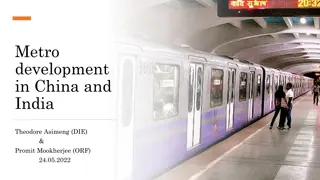Scaling Your Metro: The Journey from 10G to 400G
Explore the evolution of internet exchanges in the metro environment, focusing on technologies for scaling, ISL sizing strategies at LONAP, advancements from the 10G era to 400G, and upcoming 100G era technologies. Learn about distance capabilities, fiber optics, CWDM, and more to enhance your infrastructure and capabilities effectively.
Download Presentation

Please find below an Image/Link to download the presentation.
The content on the website is provided AS IS for your information and personal use only. It may not be sold, licensed, or shared on other websites without obtaining consent from the author.If you encounter any issues during the download, it is possible that the publisher has removed the file from their server.
You are allowed to download the files provided on this website for personal or commercial use, subject to the condition that they are used lawfully. All files are the property of their respective owners.
The content on the website is provided AS IS for your information and personal use only. It may not be sold, licensed, or shared on other websites without obtaining consent from the author.
E N D
Presentation Transcript
Scaling your metro - the journey from 10G to 400G Will Hargrave Virtual UKNOF 20th July 2020 | Everywhere
Typical Internet Exchanges Ethernet fabric shifting large volumes of traffic in the metro What is metro ? 10km? 80km? 200km? London: longest path between interconnection dense colos is 72km Many links are under 10km Technology choices impact viability Typically point to point links on dark fibre to enable scaling Solutions ideally scale at less-than-linear We will focus on technologies suitable for Internet Exchanges Own infrastructure, scaling, point-to-point, low cost 07/10/2024 2
ISL Sizing Strategy at LONAP ISLs must deliver traffic demand, even during fault conditions We use sflow to report intersite traffic demand Sum of per-site connected capacity is not very useful Wide variation in port utilisations Custom graphing solution to sum LAG members All ISLs are multipath ECMP IP p2ps, no LACP Must also check traffic balance within a LAG 30% traffic growth per year 07/10/2024 3
10G era technologies 160G+ 10G DWDM coloured optics Max capacity per fibre pair 80G 10G CWDM Coloured optics 20G 10GBase-Bidi 10GBase-ER 10G 10Gbase-LR 0km 2km 10km 40km 80km Distance 07/10/2024 4
2015 era 10G DWDM Simpler times Buy 40km or 80km DWDM SFP+, insert into switch, passive mux No amplification, dispersion compensation to worry about n * 10GE scaled to around 160G in our current setup Difficulties with too many moving parts at this scale Total of 32 SFP+, 64 fibre cores, 128 connections Could be > 256 fibre end-faces to clean even for a modest 16 channel setup 07/10/2024 5
100G era technologies 200G 800G to 2++Tbit Coherent optical ???? Max capacity per fibre pair Inphi ColorZ 2x50G PAM4 100G-Bidi 100GBase-LR (single 1310, new) 100G 4 lane solutions 25G/lane CWDM or LAN-WDM grid 100GBase-LR4 100G CWDM4 100G 4WDM10 0km 2km 10km 40km 80km Distance 10/7/2024 6
100G choices at LONAP 2016: Lighting 100G on dark fibre pairs/ 1310nm waves Initially standard 100GBase-LR4 2018 onwards: Migrated to CWDM4/4WDM10 for 30-50% cost saving 4WDM10 provides superior optical performance than LR4 Both require RS-FEC host support (not a problem) 2018-20: Need more than 100G per path Deployed 100G PAM4 solution scales to 800G+/pair Testing 100G Bidi scales to 200G/pair 07/10/2024 7
100G+ in the metro (10km+) No straightforward passive 100G DWDM option Investigated Coherent transponder solutions - many options exist Coherent can deliver up to 600G/wavelength, over thousands of kilometres at many terabits/pair prime technology for larger telcos Flexible modulation Relatively power-hungry and complex Relatively poor financial scaling Opinion: I don t feel that these are a great solution for IXPs, is there something cheaper/better at scaling? 07/10/2024 8
100G PAM4 Inphi ColorZ : 2x50G PAM4 encoded in a single 100GHz DWDM channel Standard QSFP28 in switch Arista EOS supports DOM extensions to instrument on- optic FEC DSP Optical specifications: Output power of -8dBm and min input power of -2dBm Dispersion tolerance +/-6 km on G.652 fibre Requires dedicated optical line system to address these challenges PAM4 modulation 07/10/2024 9
Open line systems Vendors start to produce dedicated systems to address these challenges Minimal configuration required Feels like a passive DWDM mux (but needs power) Contains optical amplification and dispersion compensation Components in Smartoptics DCP-M series 07/10/2024 10
100G era technologies 200G 800G to 2++Tbit Coherent optical ???? Max capacity per fibre pair Inphi ColorZ 2x50G PAM4 100G-Bidi 100GBase-LR (single 1310, new) 100G 4 lane solutions 25G/lane CWDM or LAN-WDM grid 100GBase-LR4 100G CWDM4 100G 4WDM10 0km 2km 10km 40km 80km Distance 11
100G+ in the metro: Shorter links Many of our links are in the < 10km range The grey area Do cheaper options exist? Direct price comparison against MRC charges for additional dark fibre pairs and/or datacentre crossconnects Testing 100G-Bidi with APC connectors (Flexoptix) functions OK for simple links < 2km Scales to 200G/pair 07/10/2024 12
400G 400G already shipping in quantity, for LAN links <10km Growing very fast, bandwidth of deployed 400G ports is expected to exceed 100G this year Optic cost is very competitive per-gig cost already cheaper than 100G Obviously you will need 400G host ports but that s coming quite quickly for LONAP! In the future coherent ZR and ZR+ pluggables will deliver distances from 10km up to thousands of km. Sampling during 2020. 07/10/2024 13
400G era technologies 400G-ZR+ Coherent Presently sampling during 2020 Volume during 800G + Max capacity per fibre pair 2021+ 400G-ZR Coherent 4 lane solutions 100G/lane PAM4 modulation CWDM or LAN-WDM grid 400GBase-LR4 400G 400GBase-FR4 0km 2km 10km 100km 1000km Distance 07/10/2024 14
400G LAN options for SMF + 100G breakout 400GBase-FR4 (4x100 PAM4, CWDM grid, 2km reach) 400GBase-LR4 (4x100 PAM4, CWDM grid, 10km reach) But also: 100GBase-LR (single 100G, 1311nm, 10km reach) Interoperates with 400GBase-DR4 breakout 4x100G lanes on an MPO connector Already price-competitive vs. standard 4- 100GBase-LR4 07/10/2024 15
400G LAN options for SMF CWDM breakout 400GBase-FR4 (4x100 PAM4, CWDM grid, 2km reach) 400GBase-LR4 (4x100 PAM4, CWDM grid, 10km reach) These optics use 4x100G lasers What if we could break these out into single 100G lanes? Requires CWDM coloured 100G single- optics Possible PoP architectures with 400G core and 100G-uplinked edge devices Scaling existing 100G links to 4x100G LONAP will test during 2H 2020 07/10/2024 16
Possible CWDM 100G breakout architecture 07/10/2024 17
Summary Optics world is fast-developing Some standards are moving quickly towards obsolescence, sometimes without even making it to manufacture Single-lambda 100G is likely to dominate shorter range interconnection in the future We can scale cost-effectively 07/10/2024 18
Thoughts? Comments? 07/10/2024 19
